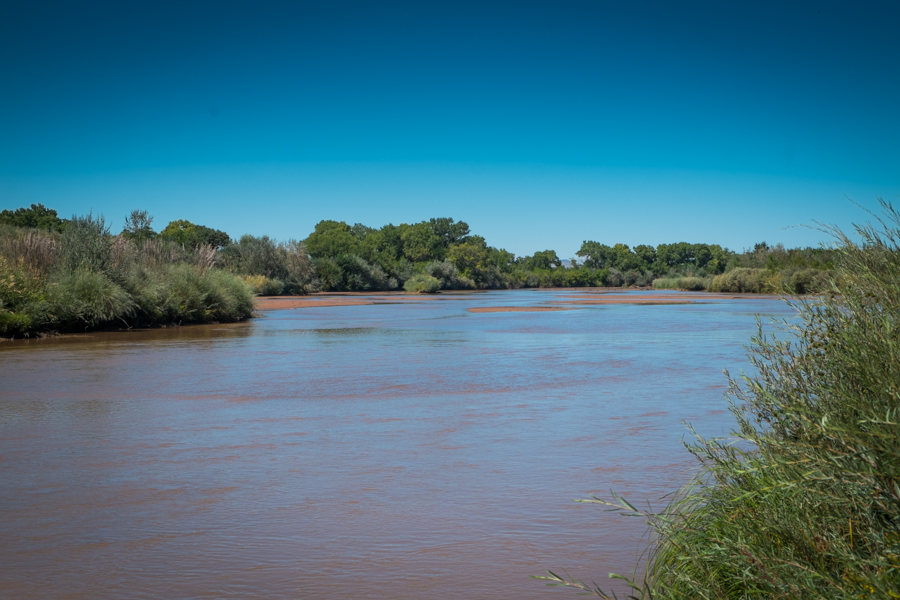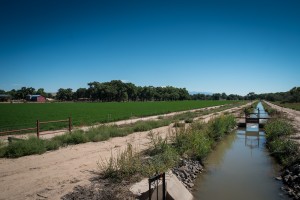Water year 2014-15 is ending with low flows again on the Rio Grande through central New Mexico. (We’ve only had one year since 2000 with above-average flows.)
Lissa and I walked out to the Rio Grande in Bernalillo County’s far South Valley this afternoon. The water was low. Low is normal for this time of year, but the river’s lower than that (234 cubic feet per second at the Albuquerque gauge, with a median this time of year around 380). A flock of Canada geese was squatting on the sand bars (just pixels in this picture, but I know they’re there) and the water was low enough that the musty smell of Albuquerque’s sewage outfall, which is just a couple of miles up river from here. It’s not an awful smell, just a reminder amid the idyllic nature shot that this remains an urban, working river:
The “water year” ends Wednesday, and this is one of my favorite times along our river. The last cutting of alfalfa is still out on the fields east of the river (did I mention it’s a working river?), but the ditches will soon be shut down, the cottonwoods are showing their first glimmers of autumn yellow, and the river itself is a quiet thing.
After an abysmal start, with a warm, dry winter and a lousy snowpack, the water year turned around with big rains starting in May. They didn’t make up for the deficit, but they helped water managers glue together a decent season, delaying the annual drought year struggle to keep water in the river for the endangered Rio Grande silvery minnow until September. The farmers and the affluent valley dwellers who get an agricultural tax exemption for their horse pasture got the water they needed. Albuquerque got the water it needed for municipal supply (and preliminary estimates suggest our per capita use this year will be down another 4 percent in 2015, meaning water use in my city continues to drop faster than population is growing, yay us).
But my preliminary calculations based on USGS data put the water year flow past the Central Avenue Bridge in Albuquerque at 608,000 acre feet, will below the long term average (1974 to the present in this case) of 893,000 acre feet. Only once since 2000 – in 2008 – has the flow past the Central Avenue gauge been above average.
Elephant Butte Reservoir, the next reservoir to the south of this point and the Rio Grande’s largest, shows it. The Butte remains abysmally empty, at just 8 percent of capacity.
Data source: USGS


